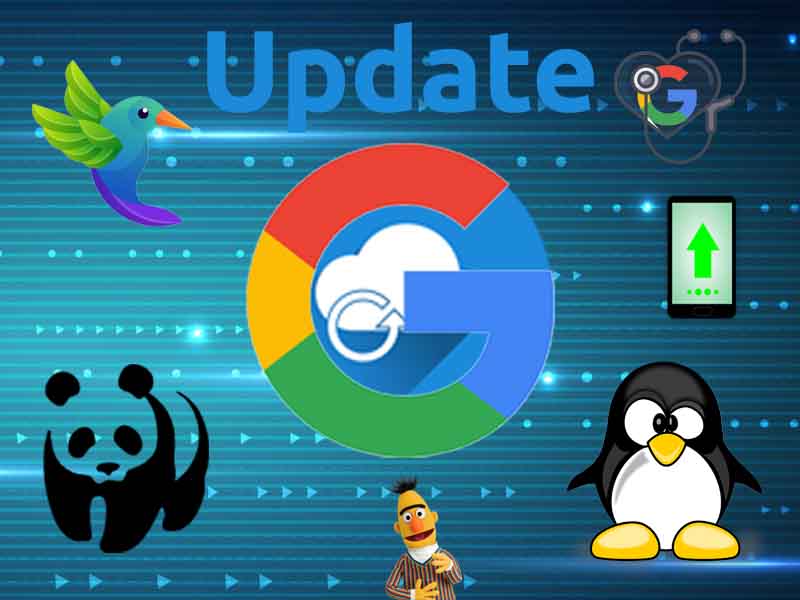Google Algorithm Updates: Transforming SEO Over the Decade
Search Engine Optimization (SEO) has undergone a significant transformation over the past decade, primarily driven by Google’s relentless pursuit of better search results. The continuous updates to Google’s algorithm have reshaped how websites rank, placing an increasing emphasis on user experience, content quality, and ethical SEO practices. Here’s a detailed breakdown of the key Google algorithm updates and their profound impact on SEO.
1. 2011 – Panda: Focusing on Quality Content
Google’s Panda update introduced a shift toward high-quality content by penalizing websites with thin, duplicate, or low-value content. Sites relying on spammy affiliate links and manipulative tactics saw a significant drop in rankings. Panda, now part of Google’s core algorithm, reinforced the necessity of producing original, valuable content that addresses user needs.
2. 2012 – Venice: The Birth of Local SEO
The Venice update revolutionized local SEO by significantly enhancing its impact and relevance. It integrated a user’s location into search queries, enhancing the visibility of geographically relevant content. This laid the foundation for location-based search optimization, making local SEO essential for businesses looking to target specific regions.
3. 2012 – Penguin: Cleaning Up Link Building
Penguin aimed to eliminate manipulative link-building practices that used low-quality or paid backlinks. This update emphasized the importance of acquiring natural, high-quality backlinks and shifted the SEO focus toward ethical link-building strategies. Penguin was eventually integrated into Google’s core algorithm, solidifying its significance as a ranking factor.
4. 2013 – Hummingbird: Understanding User Intent
The Hummingbird update marked a pivotal moment in SEO by shifting the focus from individual keywords to understanding user intent and the context of queries. This update paved the way for more conversational and natural content, enhancing the quality of results for voice and semantic search queries.
5. 2014 – Pigeon: Improving Local Search Accuracy
Pigeon enhanced the accuracy and importance of local search outcomes. By connecting local search rankings with Google Maps and organic ranking factors, this update ensured that users received the most relevant local results. For businesses targeting local audiences, this was a critical update, demanding a stronger focus on local SEO.
6. 2015 – Mobile Update: Mobile-First SEO
Mobilegeddon, as it was dubbed, was Google’s push to prioritize mobile-friendly websites in search results. With mobile traffic surpassing desktop usage, this update marked the beginning of mobile-first indexing, highlighting the need for mobile optimization in SEO strategies.
7. 2018 – Medic: Focusing on E-A-T
The Medic Update focused on health, finance, and legal websites (known as YMYL—Your Money or Your Life). Google began rewarding pages that demonstrated high levels of Expertise, Authoritativeness, and Trustworthiness (E-A-T), ensuring that users received credible, authoritative content, particularly for sensitive topics.
8. 2019 – BERT: Enhancing Query Understanding
BERT (Bidirectional Encoder Representations from Transformers) enhanced Google’s ability to understand complex and conversational queries. This update improved the accuracy of search results by interpreting the meaning behind words based on context. Content creators were encouraged to focus on clarity, writing content that directly addressed user intent and questions.
9. 2021 – Page Experience: Prioritizing User Experience
The Page Experience update brought in Core Web Vitals, a collection of metrics aimed at enhancing the actual user experience, including factors like loading speed, interactivity, and visual stability. Sites that provided a smooth, fast, and user-friendly experience saw improved rankings, underscoring the importance of performance optimization for long-term SEO success.
10. 2022 – Helpful Content: Rewarding People-First Content
The Helpful Content Update penalized sites with low-quality, shallow content created primarily for search rankings. Google rewarded content that genuinely addressed user needs, aligning with its push to prioritize “people-first” content. This update emphasized the necessity of crafting content with the user’s needs in focus, rather than just catering to search engines.
11. 2024 – Site Reputation Abuse: Fighting Manipulative Tactics
Google’s 2024 update targets manipulative SEO tactics like parasite SEO, where low-quality content is hosted on trusted domains to manipulate rankings. Websites engaging in these practices now face stricter penalties, reinforcing the importance of ethical SEO practices.
The Road Ahead: Adapting to AI-Driven SEO
As Google Algorithm Updates continues to evolve its algorithms, AI is playing a central role in enhancing search experiences. Google’s Multitask United Model (MUM) and AI-driven features promise to provide more nuanced, context-rich results across various formats (text, images, and videos). Website owners must stay ahead of trends by focusing on high-quality, people-first content, a smooth user experience, and embracing AI-driven search strategies.
Google algorithm updates key factors for SEO success:
-
Create high-quality, people-first content: Focus on delivering genuine value to users, addressing their needs, and providing authoritative information.
-
Prioritize technical SEO: Ensure your website loads quickly, is mobile-friendly, and provides a seamless user experience.
-
Stay updated on algorithm changes: Continuously monitor Google’s updates and adapt your strategies accordingly.
-
Focus on ethical practices: Avoid manipulative tactics like spammy links or keyword stuffing, and instead focus on building a trustworthy online presence.
By adhering to these best practices and keeping up with ongoing algorithm updates, you can secure long-term SEO success in an ever-changing digital landscape.


